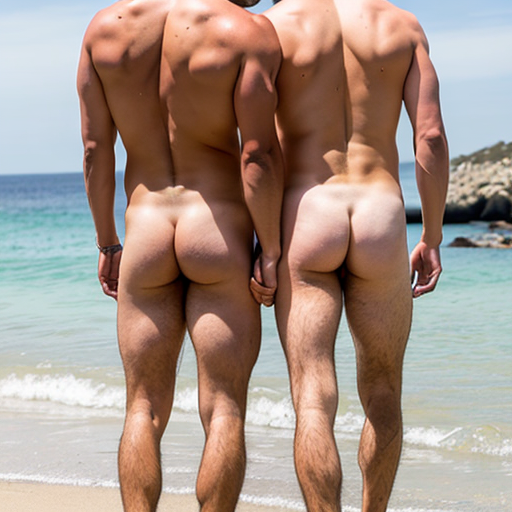An Unconventional Guide to Playa del Hombre Muerto – The World’s First Nude Gay Beach in Sitges, Spain
Date: February 19, 2024
by: MenWhoFrench
Playa del Hombre Muerto : Un Précurseur dans le Voyage LGBTQ
Nichée dans la ville animée de Sitges, en Espagne, Playa del Hombre Muerto se dresse comme un phare de liberté et d’acceptation dans la communauté LGBTQ. Cette plage pittoresque, avec ses sables dorés et ses eaux azurées, n’est pas simplement un autre endroit pour bronzer sur la côte méditerranéenne ; elle est un jalon historique. Connue comme la première plage gay naturiste du monde, Playa del Hombre Muerto est un symbole de liberté sans entraves depuis sa création. Dans ce guide, nous plongerons dans la riche histoire de cette plage, sa facilité d’accès et les nombreuses raisons qui en font une destination incontournable pour les hommes gays à la recherche de fun, de soleil et d’un sentiment de communauté.
Playa del Hombre Muerto: A Trailblazer in LGBTQ Travel
Nestled in the vibrant town of Sitges, Spain, Playa del Hombre Muerto stands as a beacon of freedom and acceptance in the LGBTQ community. This picturesque beach, with its golden sands and azure waters, isn’t just another sunbathing spot on the Mediterranean coast; it’s a historic landmark. Known as the world’s first nude gay beach, Playa del Hombre Muerto has been a symbol of uninhibited liberty since its inception. In this guide, we’ll delve into the rich tapestry of its history, the ease of accessibility, and the myriad reasons that make it an unmissable destination for gay men seeking fun, sun, and a sense of community.
Histoire de Playa del Hombre Muerto
D’un Joyau Caché à un Havre LGBTQ
L’histoire de Playa del Hombre Muerto est aussi intrigante qu’inspirante. Devenue un lieu populaire pour la communauté gay au début des années 1970, cette plage a été à l’avant-garde des droits et de la visibilité LGBTQ. Son établissement en tant que plage gay naturiste, un geste audacieux à l’époque, a marqué une étape importante dans le voyage vers l’acceptation et la liberté pour la communauté.
Le nom ‘Playa del Hombre Muerto’ (Plage de l’Homme Mort) est enveloppé de légendes locales, ajoutant un mystère à ses rivages sablonneux. Mais au-delà du folklore, la plage est devenue un sanctuaire où les hommes gays pouvaient s’exprimer librement, loin des regards indiscrets d’une société moins tolérante. Au fil des ans, elle a joué un rôle central dans la création d’un sentiment de solidarité et de fierté, la rendant bien plus qu’une simple plage – c’est un symbole de l’esprit endurant de la communauté gay.
Dans les années 1980 et 1990, à mesure que le monde commençait à adopter des attitudes plus ouvertes envers la sexualité, Playa del Hombre Muerto a évolué d’un refuge isolé en une destination célébrée. Ce n’est pas seulement la beauté de la plage qui attire les visiteurs ; c’est l’importance historique et le sentiment d’appartenance qui résonnent profondément avec ceux qui foulent ses rivages.
History of Playa del Hombre Muerto
From Hidden Gem to LGBTQ Haven
The story of Playa del Hombre Muerto is as intriguing as it is inspiring. Emerging as a popular spot for the gay community in the early 1970s, this beach has been at the forefront of LGBTQ rights and visibility. Its establishment as a nude gay beach, a bold move at the time, marked a significant milestone in the journey towards acceptance and freedom for the community.
The name ‘Playa del Hombre Muerto’ (Dead Man’s Beach) is shrouded in local legends, adding a mystique to its sandy shores. But beyond the folklore, the beach became a sanctuary where gay men could express themselves freely, away from the prying eyes of a less accepting society. Over the years, it has played a pivotal role in fostering a sense of solidarity and pride, making it more than just a beach – it’s a symbol of the enduring spirit of the gay community.
In the 1980s and 1990s, as the world began to embrace more open attitudes towards sexuality, Playa del Hombre Muerto evolved from a secluded hideaway into a celebrated destination. It’s not just the beauty of the beach that attracts visitors; it’s the historical significance and the sense of belonging that resonates deeply with those who walk its shores.

Want to listen to the rest of the article? Subscribe to the Men Who French newsletter below. This will give you access to past articles as well as new ones that come out weekly.
Sign up below!
Join the Men Who French weekly newsletter get access to more articles like the one above!
Begin receiving the “Men Who French” newsletter today. This weekly newsletter, delivered every Friday, features an exclusive article accompanied by both French audio and text. Additionally, it includes an English translation and a curated selection of fascinating French articles discovered across the internet.
